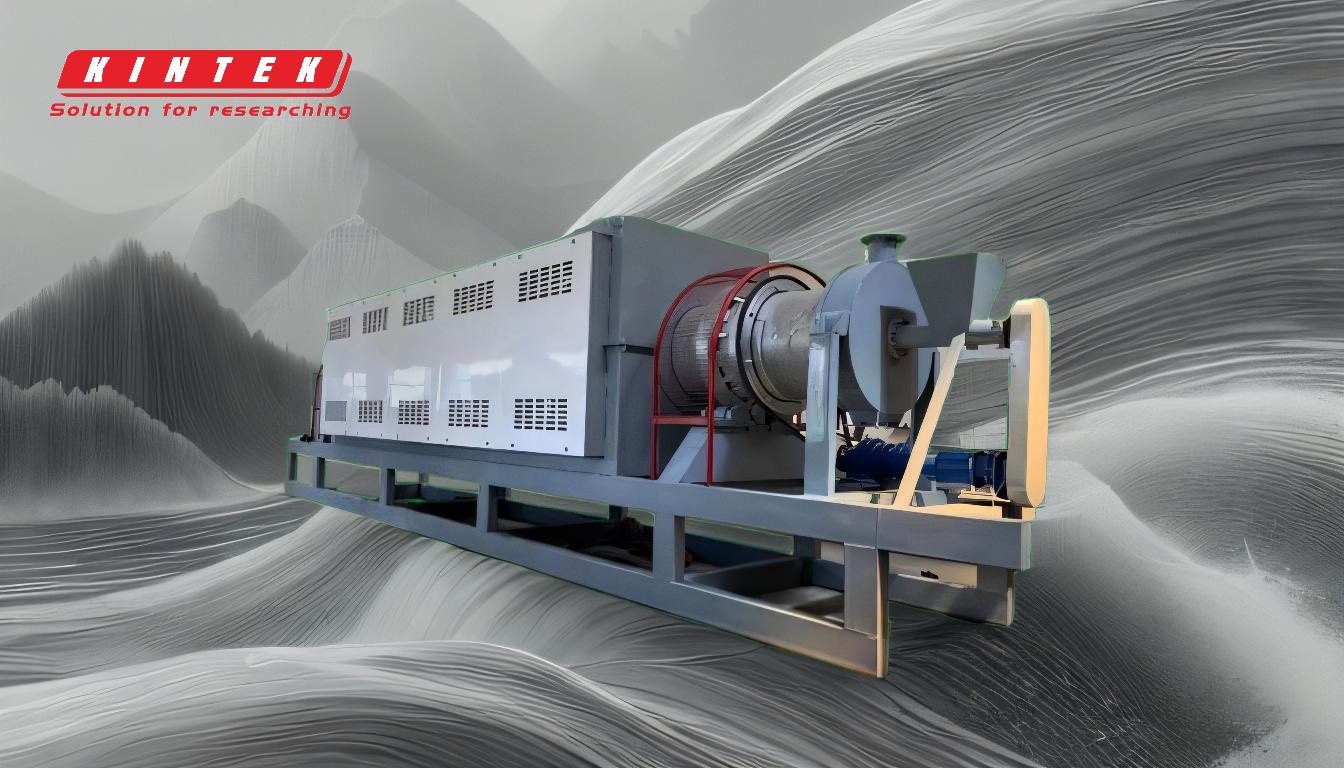Tire pyrolysis is a highly advantageous process for recycling end-of-life tires, offering significant economic, environmental, and operational benefits. It extracts high-value raw materials such as carbon black, steel, oil, and gas, which have higher market prices compared to traditional rubber granulation. The process is environmentally friendly, as it recycles 100% of the tires without producing harmful pollution. Additionally, it supports renewable energy production, reduces waste sent to landfills, and contributes to the circular economy. The technology is flexible, self-sustaining, and requires less maintenance than traditional shredding methods, making it a cost-effective and sustainable solution for waste management.
Key Points Explained:
-
Economic Advantages:
- Tire pyrolysis extracts high-value raw materials such as carbon black, steel, oil, and gas, which have significantly higher market prices compared to rubber granules. For example:
- Virgin carbon black sells for approximately 1,500 USD/t, while rubber granules sell for only 100 to 200 USD/t.
- Clean steel from pyrolysis sells for regular scrap prices, whereas steel from rubber shredding has lower profit margins due to residual rubber.
- The process pays for itself quickly and generates high income, making it a profitable investment for waste management businesses.
- It requires less maintenance compared to heavy shredding machines used in rubber granulation, reducing operational costs.
- Tire pyrolysis extracts high-value raw materials such as carbon black, steel, oil, and gas, which have significantly higher market prices compared to rubber granules. For example:
-
Environmental Benefits:
- Tire pyrolysis is environmentally friendly, as it does not produce harmful pollution and recycles 100% of the tires.
- The extracted materials, such as carbon black, steel, oil, and gas, can be used to generate electrical energy, heat, steam, or hydrogen, contributing to renewable energy production.
- The process reduces the amount of waste sent to landfills, decreasing the environmental impact of waste disposal.
- It supports the circular economy by converting waste into valuable resources, reducing the need for virgin materials.
-
Operational Flexibility:
- Pyrolysis technology is flexible and can process a wide range of polymer waste and biomass into fuel and chemical products.
- It can handle solid wastes and plastics, providing a significant boost to waste management efforts.
- The process is self-sustaining, as it generates energy that can be used to power the system, reducing reliance on external energy sources.
-
Energy and Resource Efficiency:
- Pyrolysis converts low-energy biomass into high-energy-density liquid fuels, enhancing energy efficiency.
- The biochar produced emits very little soot compared to raw biomass, making it a cleaner energy source.
- The process has the potential to produce chemicals from bio-based resources, further enhancing its environmental and economic potentials.
-
Economic and Social Impact:
- The increasing demand for renewable energy sources and the development of bio-based industries create new job opportunities and support local economic development.
- Pyrolysis contributes to the growth of the circular economy by promoting the reuse and recycling of materials, reducing waste, and conserving natural resources.
In summary, tire pyrolysis is a sustainable and profitable solution for managing end-of-life tires. It offers significant economic benefits through the extraction of high-value materials, reduces environmental impact by recycling waste and producing renewable energy, and supports the development of a circular economy. Its operational flexibility and efficiency make it a promising technology for the future of waste management and renewable energy production.
Summary Table:
| Aspect | Key Benefits |
|---|---|
| Economic Advantages | Extracts high-value materials (carbon black, steel, oil, gas); higher ROI than rubber granulation. |
| Environmental Benefits | 100% tire recycling; no harmful pollution; supports renewable energy production. |
| Operational Flexibility | Processes polymer waste, biomass, and plastics; self-sustaining energy system. |
| Energy Efficiency | Converts low-energy biomass into high-energy fuels; cleaner energy production. |
| Social Impact | Creates jobs, supports circular economy, and reduces landfill waste. |
Learn how tire pyrolysis can transform your waste management process—contact us today!









